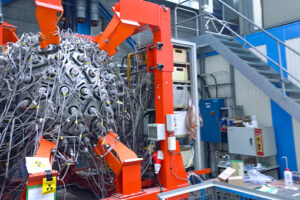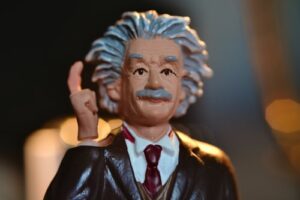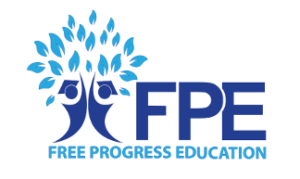Why a faculty for the foundations of theoretical physics in a Free Progress University?
Contrary to popular belief, the foundations of physics are facing one of its deepest intellectual crises. While applied physics experienced tremendous development, and several new discoveries from the micro- to macro-cosmos revolutionized our understanding of the physical world, the progress in the conceptual foundations of modern theoretical physics stagnated. On one side the theory of general relativity (GR), quantum field theories (QFT), and the standard model (SM) of particle physics showed to be quite successful theories that were proven to be correct by several experiments. On the other side, it is now almost half a century that there is a lack of real progress in the conceptual foundations that are supposed to unify them. GR and QFT both describe efficiently the world, and yet they seem conceptually incompatible. GR is a deterministic theory that describes well the force of gravity but seems to have nothing to do with the quantum domain of nuclear forces. QFT instead is a non-deterministic theory that describes well electromagnetic and nuclear forces, and even unifies them in the SM, but refuses to encompass gravity. It is now known that the SM, even though it is an extraordinarily successful and tested theory, can’t be the ultimate theory of matter. First of all, because it contains several free arbitrary parameters, apparently fine-tuned for the emergence of life just by an extraordinary coincidence. Moreover, astronomers discovered that dark matter and dark energy make up 95% of the universe, but both came as a surprise since the SM accounts only for the remaining 5% of baryonic matter (the kind of stuff we are accustomed to). This suggests that the SM isn't the whole story and we must go beyond GR, QFT, and the SM itself.

Particles collision in Hadron Collider. Astrophysics concept. 3D rendered illustration.
However, any attempt to do so in the last four decades failed. Physicists worldwide tried to conceive of new ‘quantum gravity theories, like superstrings, other supersymmetric theories, canonical quantum gravity, etc. These seem to work only partially and, in the best case, to be only the ‘tail of the lion’ but by far not the complete theory already Einstein was looking for.
The intensification of efforts pushing things to the limits led to a plethora of alternative and exotic new theories, most quite complex and mathematically abstract, which try to solve this problem (e.g. extensions of superstrings as M-Theory, AdS/CFT correspondence, the holographic principle, ‘multiverses’, etc.). But they resulted in even more strange paradoxes (e.g., black hole information loss, and ‘firewalls’) and overall the net impression is that of great confusion and incertitude, which clearly signals a deep foundational the methodological crisis in theoretical physics.
This led only towards an even deeper crisis since most of these intellectual efforts describe something which is far beyond any possibility of experimental verification or, those which make predictions in the range of detection with present-day technologies have been ruled out experimentally. In fact, predictions at low energy seem to be disconfirmed by recent experiments at particle accelerators like the LHC and by cosmological observations, which did not find any evidence that supports the current quantum gravity models.

a Large Hadron Collider, collider installation.
It is becoming clear that the last 40 years of attempts to establish a new conceptual foundation that could lead us beyond the SM, went in the wrong direction. What many theoretical physicists working in the field call the ‘nightmare scenario’ has become a reality: we are not making tangible progress and more than forty years of huge concentrated efforts by thousands of physicists worldwide to find for a theory of quantum gravity revealed itself as one of the biggest flops of the history of physics, if not of all science.
There is a large consensus that it is likely that one of the roots of the problem has to be found in an inadequate way of seeing and conceiving the material world (e.g. our notion of what space-time, matter or forces are, and if these might not be fundamental physical entities but emergent properties). Everything indicates that the basic pillars of physics must be modified, and a change of paradigm must intervene. New ideas, insights, and original as groundbreaking intuitions are necessary to get out of the impasse. A profound revision of some of our fundamental physical principles or conceptions about the physical world must probably be revised from the ground up. Nobody seems to know what these principles could be.

But there is also another and possibly much bigger hurdle that stands in the way. The problem might not be only technical, but much more of a sociological, pedagogical, didactical, and political nature in our education system. Because our post-modern way of doing science is deeply problematic too. We should seriously question ourselves if there might not be something wrong inherently in our modern way of conceiving research and academic education. What is missing in our present social and academic structures are the free ‘seers’ who, like Copernicus, Galileo, Newton, Einstein, and many others, understood the fallacies of conventional thinking and foresaw the new paradigm by looking further. But present academic systems are precisely that kind of power structure that inhibits the freedom of the ‘seers’ and refuses them free expression. Present colleges and universities allow mainly for scientists to spend their careers making incremental additions and subtle changes to existing knowledge, not new paradigm changes.
Our academic system has become increasingly authoritarian and accurately expunged the independent thinker. Especially after WWII, the belief that real scientific progress can come only from big science projects framed inside a huge industrially organized teamwork activity has become much too dominant. This managerial mindset is still accepted without critical questioning as the final word of history. The image of Einstein working lonely in the patent office is considered as a ridiculous and nostalgic desire to return to an impossible past. The lonely student who dares to investigate novel approaches breaking with the community is nowadays repressed by all means. You can't do it in college or university, it is worldwide against its (more or less undeclared) internal laws. What is even worse is that just this academic policy has convinced lots of self-promoted autodidacts, to divorce themselves from any decent academic instruction and contact with real science, ending up in the plethora of pseudo-scientific theories we are overwhelmed with nowadays.

That's where FPE comes into play. We urgently need a university system capable of going beyond the status quo, where students can express themselves, everyone with his or her unique own potential, and which is able to liberate talents, individual freedom, and everyone’s inner call. A system that has no hierarchical structures and encourages free self-initiative. A platform for a free expression of the individual potential and the development of one’s own personality. A place where new forms of learning and teaching are practiced. An environment for lifelong learning by doing, where creative learning by teaching is possible, and where everyone can learn to learn. This means, that it should be a place without any compulsion to learn, where everyone is free to progress by learning what is felt must be learned, and without an academic path forced onto the students from an advisor, professor, institution or generation old bureaucratic laws. This changes the paradigm also by challenging the dogma of the group-think idea and yet wants to furnish a setting for self-learning and self-organizing community where the individual regains its central place. A learning environment where the Unity is not a flattened uniformity, but a dynamic living organism made of a community of both large groups working together as also of individuals allowed to go their own way. Only in such a context new successful direction of research can be achieved, which could lead us towards more profound insights in theoretical physics.
This wants to be a meeting point for an independent group of students, researchers and thinkers, that will study, discuss and teach themselves and others the conceptual foundations of classical physics first and then quantum physics, relativity, quantum field theories, the standard model of particle physics, and beyond. A free congregation of physicists, mathematicians, eventually also of philosophers and historians of science who will work, together with but independently, with other departments, research teams, colleges or university structures and far from external pressures. A free research center in the conceptual foundations of physics, where everyone can study and work freely by applying also novel conceptual, pedagogical, and didactical paradigms.

